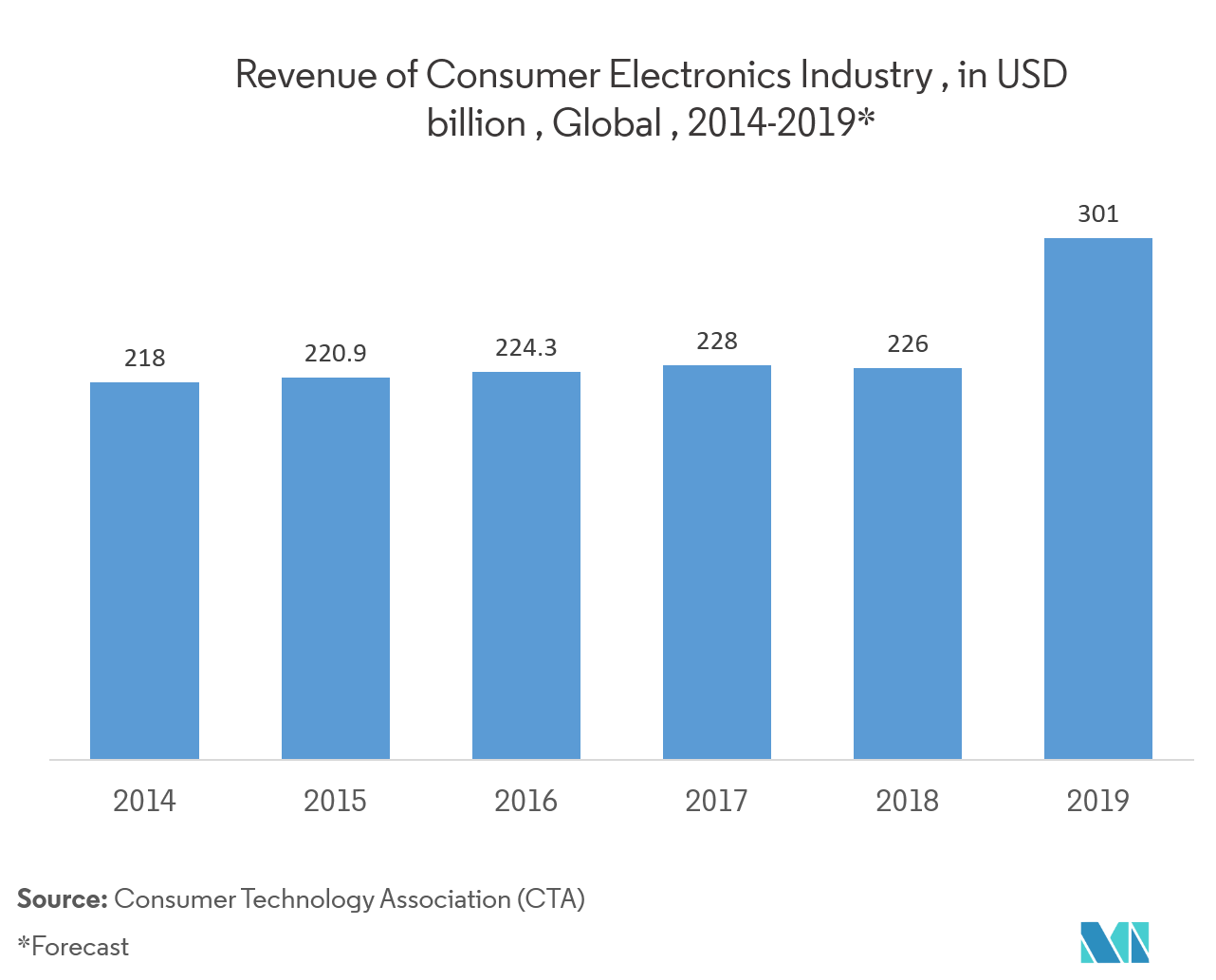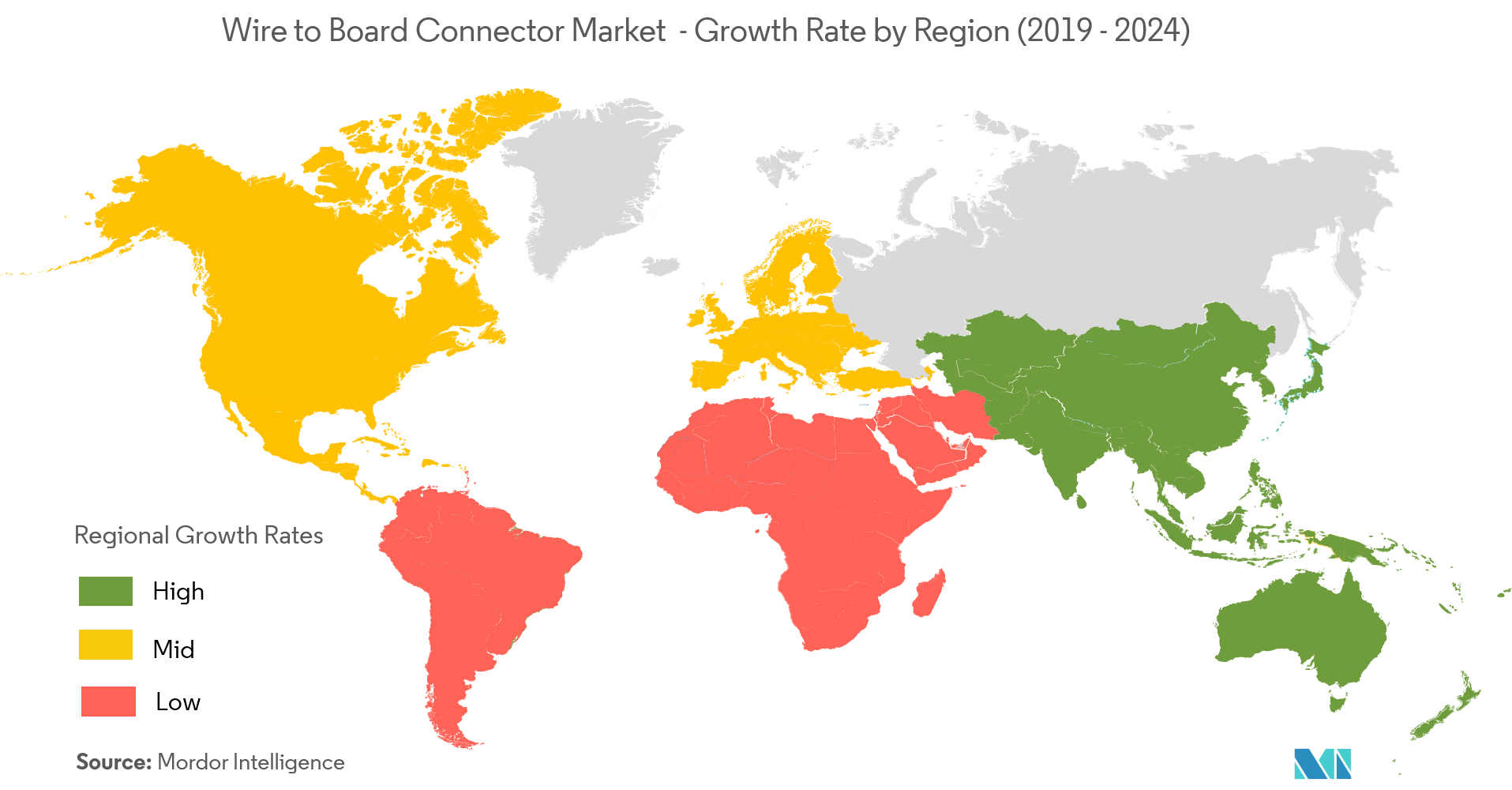Market Trends of Wire-to-Board Connector Industry
This section covers the major market trends shaping the Wire-to-Board Connector Market according to our research experts:
Consumer Electronics Segment is Expected to Expand at a Significant Rate
- Major trends influencing consumer electronics market revolves across size, form, and choice of material used for various type of applications, product miniaturization, ease of use, diminishing carbon footprints, and wireless data access converge.
- Advancement in new technologies is expected to drive the advances in applications of wire to board connectors such as True HD TVs based on LED/OLED backlight displays, roll-able printed electronics, flash memory, touchscreen technology, or data streaming as a replacement for traditional media, such as CD or DVD.
- Computing, Consumer, and Communication (3C) are the main drivers in the consumer electronics industry, characterized by strong convergence and driven by a consumer demand for functional integration, that allows manufacturers to penetrate into new or existing market segments.
- The increasing penetration of smart speakers, smart thermostats, etc., increase the need for wire-on-board connectors that occupy a small footprint. For instance, consider GradConn’s fine-pitch wire-to-board range of solutions in the range of 0.031 inches and 0.039-inch pitch. These wire-on-board connectors offer tiny PCB footprints and low-profile mounted heights suitable for video cameras, portable GPS systems, along with mature electronics, such as laptops and tablets. Molex is another prominent company to offer wire-on-board solutions suitable for smart home solutions among others.

Asia-Pacific is Expected to Occupy Largest Share in Wire-to-Board Connector Market
- The market and applications for wire-to-board connectors continue to evolve across different segment of the Asia-Pacific region. The rising growth of the consumer electronics market along with the increasing end-user applications across the various industry will gradually improve the productivity and efficiencies in the production process, throughout the supply chain. With the rise in industry 4.0, there is a growing demand for IIoT across the various end-user industry across the region during the forecast period.
- The IIoT adoption is poised to gain pace as Siemens has collaborated with Alibaba as a part of EUR 20 billion agreement, which is expected to allow them to leverage each other’s technology and resources to build an IoT solution to support Industry 4.0, which further aids China’s manufacturing up-gradation.
- Some of the relevant Industry 4.0 projects in the japan include the Mitsubishi-led e-Factory Initiative, which focuses on factory automation and the Industry 4.1J program, led by NTT, which focuses on secure cloud-based data processing.
- The future of the electronics connector market looks promising with the growing opportunities from the automotive & transportation and telecom/ datacom sector, due to rise in the computer and peripheral along with the consumer electronics industry across the Asia-Pacific region.
- Moreover, China is one of the largest production bases for wire-to-board connectors. The local segment has been growing steadily and is expected to do so at 10% annually, in terms of total sales until 2020, representing the same rate as the local connectors industry. According to the China Industry Information, the global connectors market will be on the scale of USD 60 billion by 2020 from USD 54.2 billion in 2016.


